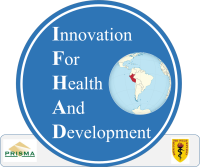Predicting tuberculosis risk among contacts of patients with tuberculosis
.
It is now widely recognised that eliminating tuberculosis will only be possible with the scale-up of tuberculosis case finding and prevention, and the integration of these traditional, biomedical interventions with broader, social protection interventions aiming to address the underlying determinants of the tuberculosis epidemic.1
Households affected by tuberculosis are areas of intense tuberculosis transmission, with contacts of patients with tuberculosis at substantially higher risk than other community members of latent tuberculosis infection and tuberculosis disease. Interventions targeted to contacts in these households have the potential to substantially reduce the burden of tuberculosis in the population.2 However, their implementation and roll-out has been hampered in many of the settings where tuberculosis burden is highest, partly because of limited resources. We have therefore worked to analyse over 15 years of data to develop scoring systems that can be used to identify contacts who are at highest risk of tuberculosis and therefore most likely to benefit from:
1) Enhanced active case finding: to detect tuberculosis disease among contacts earlier and when it is less likely to be infectious to other people.3
2) Tuberculosis preventive treatment: to prevent tuberculosis disease from occurring among contacts in the future.4
3) Social protection interventions: to maximise the impact of active case finding and preventive treatment by incentivising and enabling access to healthcare whilst concurrently reducing the poverty-related risk factors that drive the tuberculosis epidemic.5,6
.
Household-level risk score to predict the risk of tuberculosis occurring in any contact
We have derived and externally validated a score that can be used to identify households in which any contact, of any age, is at high risk of having tuberculosis disease within three years. This score can be used in all currently tuberculosis-affected households, including those in which the patient has extra-pulmonary tuberculosis, and can be found at this link: https://jscalc.io/calc/8xzrWJ99BMs6uCV7
.
Personal-level risk score to predict the risk of tuberculosis among adult contacts
We have derived and externally validated a score that can be used to identify adult contacts (aged over 15 years) of patients with laboratory confirmed, pulmonary tuberculosis, at high risk of having tuberculosis disease within ten years.7 This peer-reviewed, published score can be found at this link: https://jscalc.io/calc/qoLectXm5TiopbbD
References:
1.- Wingfield T, Tovar MA, Datta S, Saunders MJ, Evans CA. Addressing social determinants to end tuberculosis. Lancet 2018; 391: 1129:page 32.
2.- Saunders MJ, Datta S. Contact Investigation: A Priority for Tuberculosis Control Programs. Am J Respir Crit Care Med 2016; 194: 1049, page 51.
3.- Saunders MJ, Tovar MA, Collier D, et al. A comparison of active and passive case finding in tuberculosis-affected households: a 10-year prospective cohort study, Peru. Lancet Infect Dis 2019; IN PRESS.
4.- Saunders MJ, Tovar MA, Montoya R, et al. Isoniazid preventive treatment is effective in children and adolescents aged 5-19 years in impoverished peruvian desert shantytowns. Int J Tuberc Lung Dis 2018; 22: S124.
5.- Wingfield T, Tovar MA, Huff D, et al. The economic effects of supporting tuberculosis-affected households in Peru. Eur Respir J 2016; 48: 1396‚ page 410.
6.- Wingfield T, Tovar MA, Huff D, et al. A randomized controlled study of socioeconomic support to enhance tuberculosis prevention and treatment, Peru. Bull World Health Organ 2017; 95: 270‚ page 80.
7.- Saunders MJ, Wingfield T, Tovar MA, et al. A score to predict and stratify risk of tuberculosis in adult contacts of tuberculosis index cases: A prospective derivation and external validation cohort study. Lancet Infect Dis 2017;17: 1190‚ page 9.
